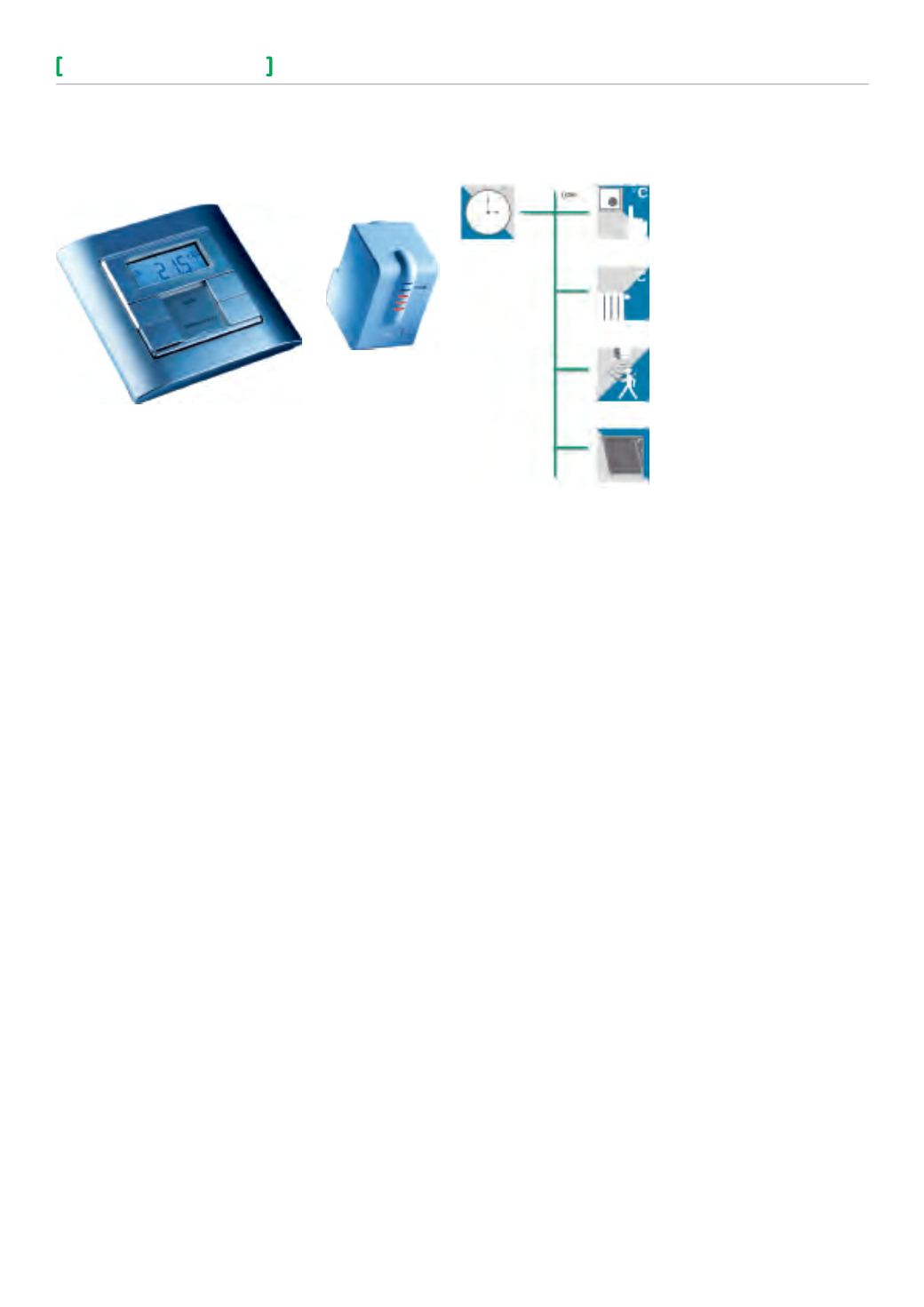

15
Lighting Control Catalogue
Temperature Control
For single room temperature control, all sensors, actuators and the operating unit are combined with a central control unit in a
star topography. This approach has many disadvantages:
•
Extensive cabling between the devices
•
Inflexibility due to fixed wiring
•
Additional space is required for the control unit and cables
•
The design of the control unit does not match the other switches and sockets.
Alternatively, the following approach can be adopted: the temperature sensor and the operating and control unit are integrated
in one bus device (”Temperature Controller”). The controller transmits the manipulated variable via the LON network to an
actuator (e. g. art. no. 62301-233) mounted on a cooling or heating battery in the ceiling void, which converts the command
into a corresponding valve movement. Floating contacts, e. g. of architrave-type switches at the windows, or dew point
sensors can be connected directly to the digital inputs of the valve actuator.
The following advantages result from decentralised room control:
•
Simple and cost-effective cabling
•
High flexibility in case of alterations or extensions
•
The controller is available in all
versions and designs.
Besides the LON network, only a temperature controller incl. LON Bus Coupling Unit, and at least one LON valve actuator
(or other actuator) is required. This combination can be retrofitted by an occupancy sensor or a system clock. Via the LON
network, the decentral single room control can be linked to other installation systems, such as lighting, sunblind or access
control.



















